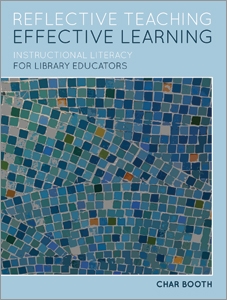Primary tabs
You don't need to be an ALA Member to purchase from the ALA Store, but you'll be asked to create an online account/profile during the checkout to proceed. This Web Account is for both Members and non-Members.
If you are Tax-Exempt, please verify that your account is currently set up as exempt before placing your order, as our new fulfillment center will need current documentation. Learn how to verify here.
- Description
- Table of Contents
- About the author
- Reviews
Recipient of the 2012 ACRL Instruction Section Ilene F. Rockman Publication of the Year Award
Foreword by Sarah Houghton-Jan
Whether or not "instruction" appears in their job titles, librarians are often in the position of educating their users, colleagues, and peers to successfully locate and evaluate information. Because MLIS education tends to offer less-than-comprehensive preparation in pedagogy and instructional design, this much-needed book tackles the challenge of effective teaching and training head-on. Char Booth, an avid library education and technology advocate, introduces a series of concepts that will empower readers at any level of experience to become better designers and presenters, as well as building their confidence and satisfaction as library educators. Laying the foundation for effective teaching, Booth outlines a four-part framework of Instructional Literacy, which includes
- Reflective Practice: tools for improving learning in the moment and developing a teacher identity, as well as approaches to collaboration and creating communities of practice
- Educational Theory: evidence-based strategies in learning and instructional research
- Teaching Technologies: evaluating and integrating technology in learning using a practical "toolkit" approach
- Instructional Design: a systematic and outcomes-based strategy for developing and assessing learning experiences
This foundation is supplemented by the USER Method, a step-by-step approach to creating learner-focused instruction. Tailored to library contexts, USER walks readers through understanding an instructional scenario, structuring content, engaging learners, and reflecting on outcomes. Also included are templates for instructional planning and technology evaluation, as well as practical advice and scenarios from those working in the field. Entailing a methodical approach to educating oneself about this emerging field, Booth's work helps librarians become better learners and teachers.
Check out this title's webextras!
Foreword, by Sarah Houghton-Jan
Preface
Acknowledgments
Introduction: In the Trenches
Part I Instructional Literacy
Chapter 1 Teaching Effectiveness
Chapter 2 Metacognition and Reflective Practice
Chapter 3 Learning with/from Others
Chapter 4 A Crash Course in Learning Theory
Chapter 5 A Correction Course in Instructional Theory
Chapter 6 Teaching Technologies
Chapter 7 Instructional Design
Part II The USER Method
Chapter 8 USER and Library Instructional Design
Chapter 9 Understand
Chapter 10 Structure
Chapter 11 Engage
Chapter 12 Reflect
Conclusion
Further Reading
Appendix A Planning Templates
Appendix B Instructor Development Survey Responses
Glossary
List of Figures
Index
Char Booth
Char Booth is Associate Dean of the University Library at CSU San Marcos. A 2007 ALA Emerging Leader and 2008 Library Journal Mover and Shaker, Char blogs about library futures, instructional design, and technology literacy at info-mational, and tweets @charbooth. Her books include Informing Innovation: Tracking Student Interest in Emerging Library Technologies at Ohio University and Reflective Teaching, Effective Learning; Instructional Literacy for Library Educators. Char completed an ME in educational technology at Ohio University in 2008, an MSIS at the University of Texas at Austin's School of Information in 2005, and a BA in history at Reed College in Portland, Oregon, in 2001.
"Given the rapid changes in the information paradigm resulting from the proliferation of digital resources, educators are becoming essential members of information services. However, teaching ability is not a selection criterion for employment in libraries, and few librarians are trained educators. This is why librarians need this book ... an invaluable resource, worthy of a place in any library collection as a vital resource for staff members selected for instructional duties."
--The Australian Library Journal



